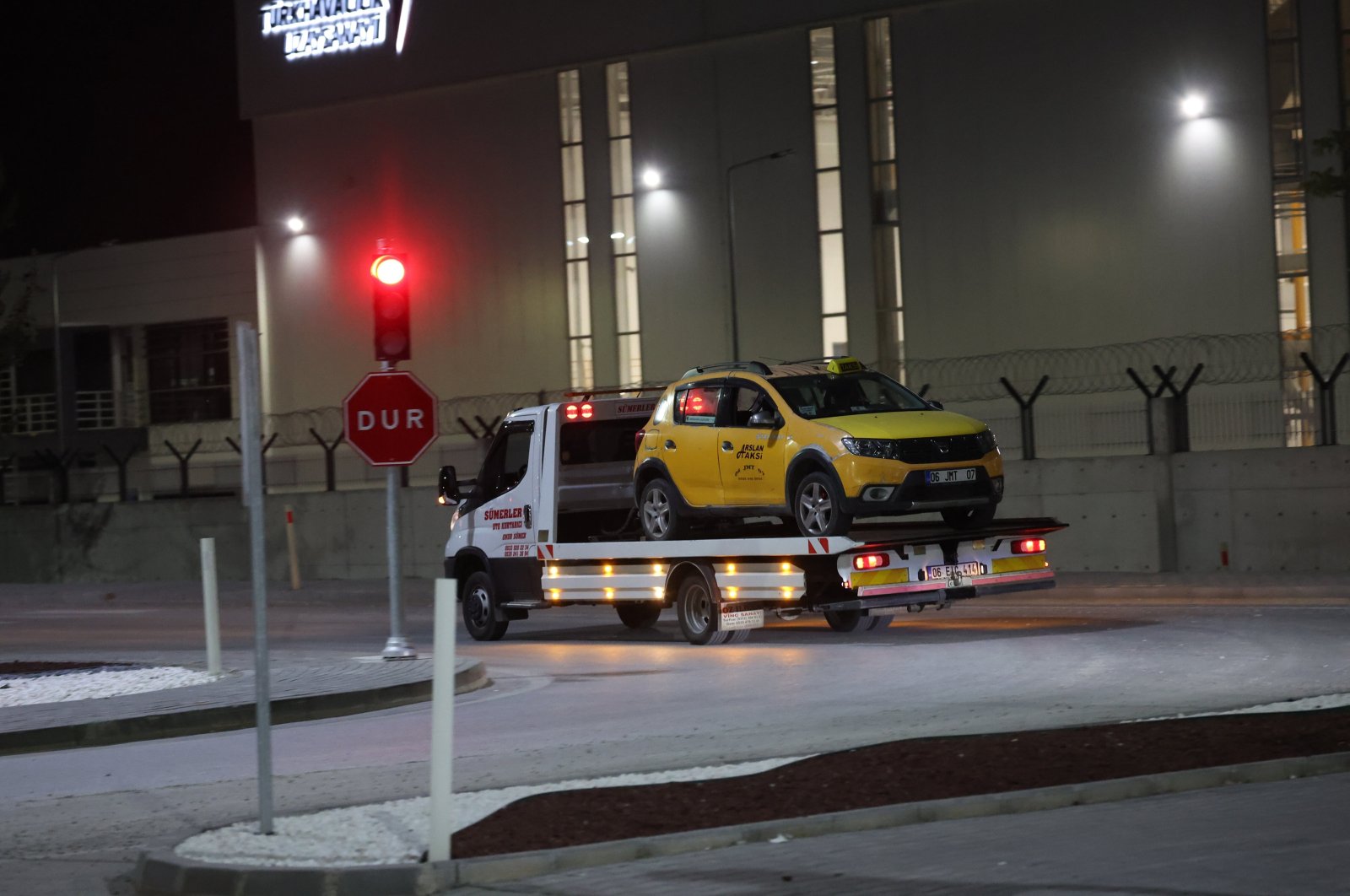
The terrorists who carried out Wednesday’s deadly attack in Ankara have been identified as members of the PKK terrorist organization, Interior Minister Ali Yerlikaya said Thursday.
The man has been identified as Ali Örek, code-named "Rojger," while the woman has been identified as Mine Sevjin Alçiçek.
Alçiçek’s name is mentioned in media reports from 2014 and 2015 as co-chair of a branch of the now-defunct Peoples' Democratic Party (HDP) in the southeastern province of Hakkari.
A media report from 2015 shows she was elected co-chair of the party for the central district of Hakkari. Authorities did not confirm whether it was the same person.
"I once again wish Allah's mercy upon our martyrs and a speedy recovery to the injured," said Yerlikaya on X.
"No terror attack can break our resolve. They cannot intimidate our noble nation," he added.
Two terrorists carried out Wednesday’s attack with automatic rifles and explosives on the headquarters of Turkish Aerospace Industries (TAI) in the capital of Ankara. Five people were killed and 22 others were wounded.
The Turkish intelligence and army launched fresh airstrikes on PKK targets in Syria and Iraq overnight, hitting 47 targets, in response to the terrorist attack.
Türkiye regularly targets the PKK in Iraq and Syria with fighter jets and drones and TAI is Türkiye's largest aerospace manufacturer, producing drones, helicopters, training craft and developing the country's first indigenous fighter jet, KAAN.
The PKK took up arms against the Turkish state in 1984 to achieve a so-called Kurdish self-rule in southeastern regions and is designated a terrorist organization by Ankara, as well as the United States and the European Union.
The conflict was mainly fought in rural areas of southeastern Türkiye but is now more focused on the mountains of northern Iraq's semi-autonomous Kurdistan Regional Government (KRG)-administered region, where the PKK militants have their headquarters in Qandil, which sits roughly 40 kilometers (25 miles) southeast of the Turkish border in Irbil.
The terrorists still carry out attacks on Turkish soil, both against security forces and in civilian places.
Last year on Oct. 1 during Parliament’s reopening, a PKK terrorist blew himself up and another was eliminated in an attack targeting the headquarters of the Turkish national police in Ankara.
In November 2022, a bomb planted by a PKK terrorist that entered Türkiye illegally from Syria killed six people and injured 99 others on Istanbul’s bustling Istiklal Street.
Türkiye has, over the past 25 years, operated several dozen military bases in northern Iraq in its war against the PKK and has been conducting airstrikes as part of the "Claw” operations since 2022 to demolish terrorist lairs and prevent the formation of a terror corridor along its borders.
The PKK is not recognized as a terrorist group in Iraq but is banned from launching attacks on Türkiye from Iraqi soil.
In Syria, the group operates through its local offshoot, the YPG, which has exploited the power vacuum during the Syrian civil war to occupy swathes of oil and gas-rich land and create a self-styled entity in the country’s northeast.
The terrorist group has also found a major ally in the U.S. to fight against Daesh terrorists and justifies its presence as a frontier against remnants of Daesh, also a strain on Turkish-American relations.
Türkiye continues to stress that the YPG is an arm of the PKK, which has been responsible for the deaths of more than 40,000 people, including women, children, infants and the elderly.
Türkiye controls two large strips of territory along the border after expelling PKK/YPG forces in successive campaigns. Ankara says it aims to create a security strip along its Syrian and Iraqi borders and sever the ties between the YPG and PKK strongholds in northern Iraq’s Qandil region.
